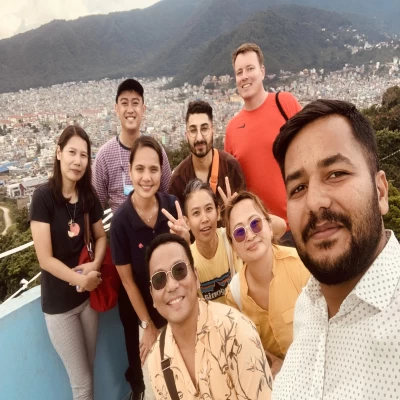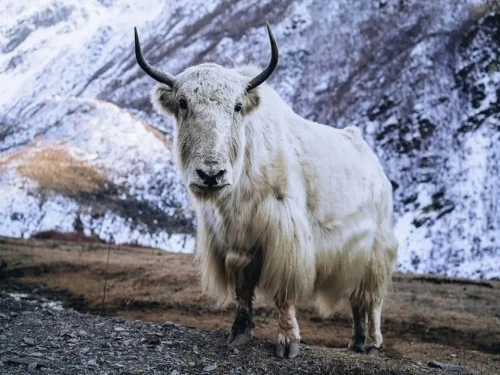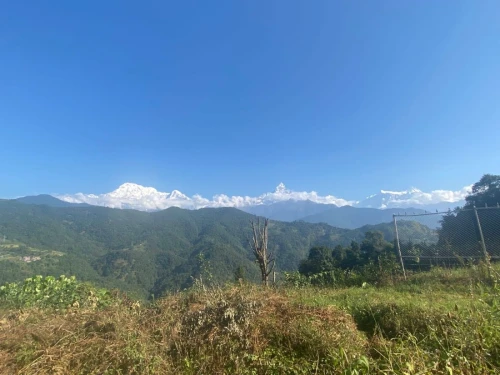Cost overview
The cost of climbing Mount Everest can range widely, typically from $40,000 to $150,000 or more. This range depends on numerous factors, including the level of support, type of expedition, and personal preferences. Here's a breakdown of the main tires:
Budget Expeditions ($40,000–$150,000)
Budget climbs are the basic Everest expeditions, often organized by local or lesser-known companies. These expeditions are usually offered by local Nepali companies or international operators with low-overhead models. They are suitable for experienced climbers who are highly self-sufficient and prioritize reaching the summit over comfort or support. Budget climbers,, often sherpas, cook for themselves at camps nd are expected to handle some logistics independently. While the cost is lower, the risks and responsibilities are significantly higher.
Standard Guided Expeditions ($70,000–$100,000)
Climbers seeking a mixture of safety and support at a cost will find this to be the most common price category. These expeditions are organized by competent guiding organizations and will include Sherpas, the transport of gear, other supplies, meals, medical consideration if necessary, weather forecasting, and evacuation plans in case of emergencies. Oxygen supplies and acclimatization schedules will be dealt with very seriously. While not luxurious, the standard expeditions will give a climbing experience much safer and with significantly higher support compared to an economical one.
Luxury Expeditions and Private Expeditions ($120,000–$160,000)
For those willing to pay for it, luxury expeditions can provide services such as private tents and gourmet meals, one-on-one Sherpa support, and the newest communications equipment. Climbers could even have personal guides, custom acclimatization plans, and heated base camp domes. These packages are all about maximizing the comfort and convenience of climbers every step of the way.
Elite Guiding Services (Up to $250,000/$300,000)
Professional mountain as guided by Kenton Cool; personalization is what elite yachts rave about—bespoke, VIP-type experiences—for high-net-worth individuals or celebrities. For chartered helicopter transportation, world-class personal trainers, conditioning before climbs, and so much more. Also, expect more than all luxurious packages. Truly Everest climbing at its finest—and most expensive.
By all means, the wide price ranges that Everest climbing offers vary not only because of the service scale but also according to one's personal goals, risk tolerance, and experience. Whether you are a veteran mountaineer or a novice with deep pockets, there is almost an Everest expedition for every budget—if only you prepare yourself for the challenge.
Breakdown of Key Expenses
In summary, the key expenses are as follows: their breakdown. Putting up all those expenses means that climbing Mount Everest involves more than just hiring a guide and walking up the mountain. Success and safety rest on many individual components, each of which has been duly accounted for in detail as key expenses that must be considered by any climber.
The Climbing Permit
Of the entire sum of the cost, the largest portion goes for the climbing permit obtained from the Nepalese government. For 2025, the climbing permit for the spring season (April-May), which is the most popular and stable climbing window, stands at $15,000 per person. The fee is not negotiable and is determined for all climbers. Permits issued for off-seasons could be a bit cheaper, but the higher risk, due to unfavorable weather, outweighs the small cut in cost.
Guides and Sherpa Support
Engaging seasoned mountain guides and Sherpas is extremely important. Sherpas are high-altitude experts who help carry loads, set up camps, and secure your safety. While shared Sherpa arrangements are in practice with some budget trips, mostly standard and luxury-level expeditions prefer having dedicated Sherpa support, which can greatly enhance your odds of summiting. Tips for Sherpas (usually anticipated) may add another $1,000 to $5,000.
Equipment and Gears
At high altitudes, professional mountaineering has very specific clothing and gadgets for survival under extreme cold and heights. Some of the interesting items include:
Down suit Mountaineering boots (double or triple-layered) Crampons, ice axe, harness Sleeping bag with a -40°C rating Climbing helmet, gloves, and goggles Highlighted text is suspected to be the most likely gene. Tips for Sherpas (often expected) can add another $1,000 to $5,000.
Oxygen Systems
Most climbers require supplemental oxygen above 8,000 meters, and included are 3- 5 oxygen cylinders at $500-$700 each and masks, regulators, and bottle-carry systems for it. The entire oxygen equipment package is usually in the range of $3,000-$6,000 based on the number of bottles being used.
Logistics and Base Camp Support
Mount Everest expeditions include weeks at Base Camp and several camps along the mountain. Logistics costs cover:
- Tent accommodation
- Food and cooking staff
- Porters and yaks to transport gear
- Communication tools (radios, satellite phones)
- Medical care (sometimes with a camp doctor)
- Higher-end expeditions may offer Wi-Fi, heated tents, and dining domes.
Traveling and Insurance
Traveling to Everest does not come cheap:
- International flights to Nepal: $1000-2000
- Domestic travel (to Lukla or Tibet): $500-1000.
- Costs of lodging, meals, and city transport in Kathmandu, Insurance (mandatory)
- Including evacuation and high-altitude coverage of around $1,000 - $3,000.
Typical & Emergency Expenses
- Unexpected costs that usually crop up
- Helicopter evacuation (not paid by insurance)
- Tipping for staff, Gear damages or replacements.
Total Estimates of Breakdown
| Expenses Category | Estimated cost (in USD) |
| Climbing Permit | 15,000 |
| Guides and Sherpas | 5,000-10,000+ |
| Gear and Equipment | 7,000-10,000 |
| Oxygen System | 3,000-6,000 |
| Base Camp & Logistics | 5,000-10,000 |
| Travel & Insurance | 4,000-8,000 |
| Miscellaneous | 1,000+ |
| Estimated Total | 40,000-100,000+ |
These costs can differ greatly depending on preferences, the experience level of the climbers, and the guiding company used. Careful planning for each category is critically important for a successful and safe expedition.
Recent Changes (2025 Updates)
With the growing interest in climbing Mount Everest, significant changes in rules, costs, and expectations applicable to the world highest peak have been witnessed in 2025. These amendments are intended to ensure safety, manage overcrowding, and reduce environmental effects. Thus, here are some important changes to note for climbers planning an expedition.
Permit Fee
A $4,000 Upward Adjustment for a Permit Fee. Another change worth noting is the climbing permit fee; spring season permit fees went from $11,000 to $15,000 per person, the highest climbing season. This price amendment rose in late 2024 in an attempt to generate more avenues for revenue for the conservation of the mountains, search and rescue, as well as infrastructure improvements.
Criminal Eligibility of All Climbers
To reduce the number of accidents caused by unqualified climbers, Nepal wants to impose an unprecedented rule stating that mountaineers need to possess prior experience on peaks above 7,000 meters before attempting Everest. Although not fully adopted yet, this measure is likely to be a prerequisite, especially for those operating through primary expedition facilitators.
Disposal of Mandatory Wastes and Human Waste
To address the increasing degradation of the environment on the mountain, every climber is expected, in the new policy brief, to bring all his wastes, including human wastes down. The climbers will be issued poop bags and deposit system may also be employed to ensure compliance. The initiative is supposed to solve the long-standing issue of waste accumulation on Everest in the highest camps.
Crackdown on Fake Permits and Overcrowding
The Nepalese government has been working to tighten regulation on the guiding companies and abolish the use of fake permits and unauthorized operations. Also similar, authorities are thought to prefer capping the amount of permits issued every season to be able against the extreme overloading that in recent years has resulted in deadly jams. Rescue and Safety Infrastructure Heightened.
Enhanced Infrastructure for Rescue and Safety
More permit fees will partly go into improving search-and-rescue operations with plans for helicopter access, communication infrastructure, and rescue training for Sherpas. This is vital, especially in the death zone above 8000 meters, where assistance is never or only too late.
In Conclusion
As far as climbing Mount Everest is concerned, it stands as a true challenge of a lifetime to be even attempted—beautiful and tough, well-tread in the context of physical strength, mental endurance, and even financial commitment. And indeed, compared to previous years, the cost of this undervalued adventure has gone so much higher in 2025:
Most estimates would run anywhere from $40,000 to well into the six figures based on the level of service and expedition style and preference. With such a renewed set of regulations—putting extra costs on permits and environmental regulations—there is every likelihood that such statistics will keep on rising. And that's just a part of that price-isn't it? It pays out time in preparation, in risk-taking in the event of mishaps, and in enduring real discomfort from extremes. But the life-changing rewards await the one who attains the grand moment of standing on the roof of the world.
Every dollar spent on trekking pays for supporting not just oneself but also the Sherpas, logistics teams, and mountain conservation work that allows for such adventures. If trekkers want to reach Mount Everest Base Camp, please follow the Everest Base Camp Trek 12-day Package from Kathmandu.




 4 reviews
4 reviews.webp)



